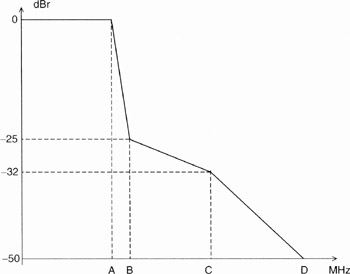4.2 Licensed and Unlicensed Frequencies
4.2 Licensed and Unlicensed Frequencies
3G networks have licensed fixed frequency bands. These bands are 1885–2025 GHz and 2110–2200 GHz. WiFi WLANs (11b) also have a fixed frequency band: 2410–2480 GHz. This latter band is in the ISM (Industrial, Scientific and Medical), a free band also used by systems other than WiFi.
For WiMAX, the IEEE 802.16 standard considers that the system works on frequencies smaller than 11 GHz (for the PHYsical layers considered for WiMAX). Precise operating frequencies are indicated in WiMAX Forum system profiles (see Sections 4.3 and 4.4 below).
Both types of frequency bands are part of WiMAX:
-
licensed bands;
-
license-exempt bands.
It is often mentioned that unlicensed frequencies of WiMAX will be used for limited coverages, campuses (enterprise or academic), particular initiatives, etc. In other words, operator revenue should come only from licensed frequencies where the service can be more easily guaranteed.
In some countries and regions, attributed licenses are known as agnostic licenses, i.e. no specific technology or other requirements are mandatory. Only frequency filter shapes and maximum transmitted power are indicated. For example, in these bands, an operator can have 3G or UMTS. However, not all attributed frequencies are agnostic. In some countries, a WiMAX licensed band may only be used for WiMAX operation. Additional constraints may also exist. For example, WiMAX cannot be used for mobile operations in some countries.
The standard indicates that the RF (Radio Frequency) centre frequency is the centre of the frequency band in which a BS or an SS may transmit. Uplink and downlink centre frequencies must be multiples of 250kHz. The required precision is of the order of 10−5 (depending on the PHYsical Layer and whether it is the BS or the SS).
4.2.1 Frequency Channels and Spectral Masks
The spectral mask of the interfering signal of WiMAX working on licensed bands depends on local regulatory requirements (in Europe, ETSI requirements). When changing from one frequency (burst profile) to another, margins must be maintained to prevent saturation of the amplifier and to prevent violation of emission masks.
Concerning license-exempt bands ([11], Section 8.5), the channel centre frequency is given by
![]()
where nch = 0,1,…,199 is the channel number. This definition provides a numbering system for all channels, with 5 MHz spacing, from 5 GHz to 6 GHz. The standard indicates that this provides flexibility to define channelisation sets for current and future regulatory domains.
Channelisation has been found to be compatible with the WiFi WLAN 802.11 a variant, for interference mitigation purposes, in the 5 GHz (US definition) Unlicensed National Information Infrastructure (U-NII) frequency band (see Table 4.1).
| Regulatory domain | Band (GHz) | Channel Number | |
|---|---|---|---|
| 20 MHz channels | 10 MHz channels | ||
| USA | U-NII middle 5.25–5.35 | 56, 60, 64 | 55, 57, 59, 61, 63, 65, 67 |
| U-NII upper 5.725–5.825 | 149, 153, 157, 161, 165 | 148, 150, 152, 154, 156, 158, 160, 162, 164. 166 | |
| Europe | CEPT band B 5.47–5.725 | 100. 104. 108. 112. 116. 120. 124. 128. 132. 136 | 99. 101. 103. 105. 107. 109. 111. 113. 115. 117. 119. 121. 123. 125. 127. 129. 131. 133. 135. 137 |
| CEPT band C 5.725–5.875 | 148. 152. 156. 160. 164. 168 | 147. 149. 151. 153. 155. 157. 159. 161. 163. 165. 167. 169 | |
In license-exempt bands, the transmitted spectral density of the transmitted signal must fall within the spectral mask of Figure 4.9. The measurements must be made using the 100 kHz resolution bandwidth. The 0 dBr level is the maximum power allowed by the relevant regulatory body.

Figure 4.9: Transmit spectral mask (see also Table 4.2). (From IEEE Std 802.16-2004 [1]. Copyright IEEE 2004, IEEE. All rights reserved.)
| Channelisation (MHz) | A | B | C | D |
|---|---|---|---|---|
| 20 | 9.5 | 10.9 | 19.5 | 29.5 |
| 10 | 4.75 | 5.45 | 9.75 | 14.75 |
[11]WiMAX Forum White Paper, Initial certification profiles and the European regulatory framework, September 2004.
EAN: 2147483647
Pages: 124